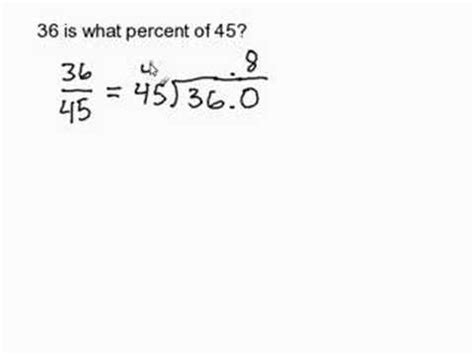How to Find the Percentage of Two Numbers: A Simple Guide
Calculating percentages is a fundamental skill with wide-ranging applications, from everyday budgeting to complex financial analysis. This guide provides a clear, step-by-step approach to finding the percentage one number represents of another. We'll cover the basic formula, practical examples, and some helpful tips to master this essential calculation.
Understanding the Basics: The Percentage Formula
The core concept revolves around understanding that a percentage is a fraction of 100. The formula to calculate the percentage is:
(Part / Whole) * 100 = Percentage
Where:
- Part: This is the number you want to express as a percentage of the whole.
- Whole: This is the total number you're comparing the part to.
- Percentage: This is the final result, expressed as a percentage (%).
Step-by-Step Calculation: A Practical Example
Let's illustrate with an example. Suppose you scored 45 out of 60 on a test. To determine your percentage score, follow these steps:
-
Identify the Part and the Whole:
- Part: 45 (your score)
- Whole: 60 (the total possible score)
-
Apply the Formula: (45 / 60) * 100 = 75%
-
Interpret the Result: Your test score is 75%.
More Examples to Solidify Your Understanding
Here are a few more examples to practice:
-
Example 2: You have 15 apples out of a total of 25 fruits. What percentage of your fruits are apples?
(15 / 25) * 100 = 60%
-
Example 3: A store offers a 20% discount on a $100 item. What is the discount amount?
First, calculate 20% of $100: (20/100) * $100 = $20. The discount is $20.
-
Example 4: You invested $500, and your investment grew to $600. What is the percentage increase?
First, find the difference: $600 - $500 = $100. Then, calculate the percentage increase: ($100 / $500) * 100 = 20%
Tips and Tricks for Accurate Percentage Calculations
- Use a Calculator: For larger numbers or more complex calculations, a calculator is highly recommended for accuracy.
- Simplify Fractions: Before multiplying by 100, simplifying the fraction (Part/Whole) can make the calculation easier.
- Double-Check Your Work: Always review your calculations to ensure accuracy. A small mistake can significantly impact the final result.
- Practice Regularly: The more you practice, the more comfortable and proficient you'll become at calculating percentages.
Mastering Percentages: Beyond the Basics
Understanding percentage calculations is a crucial skill that extends far beyond simple examples. It's the foundation for understanding concepts like interest rates, discounts, tax calculations, and much more. With consistent practice and a solid grasp of the formula, you'll confidently navigate percentage problems in various contexts.
